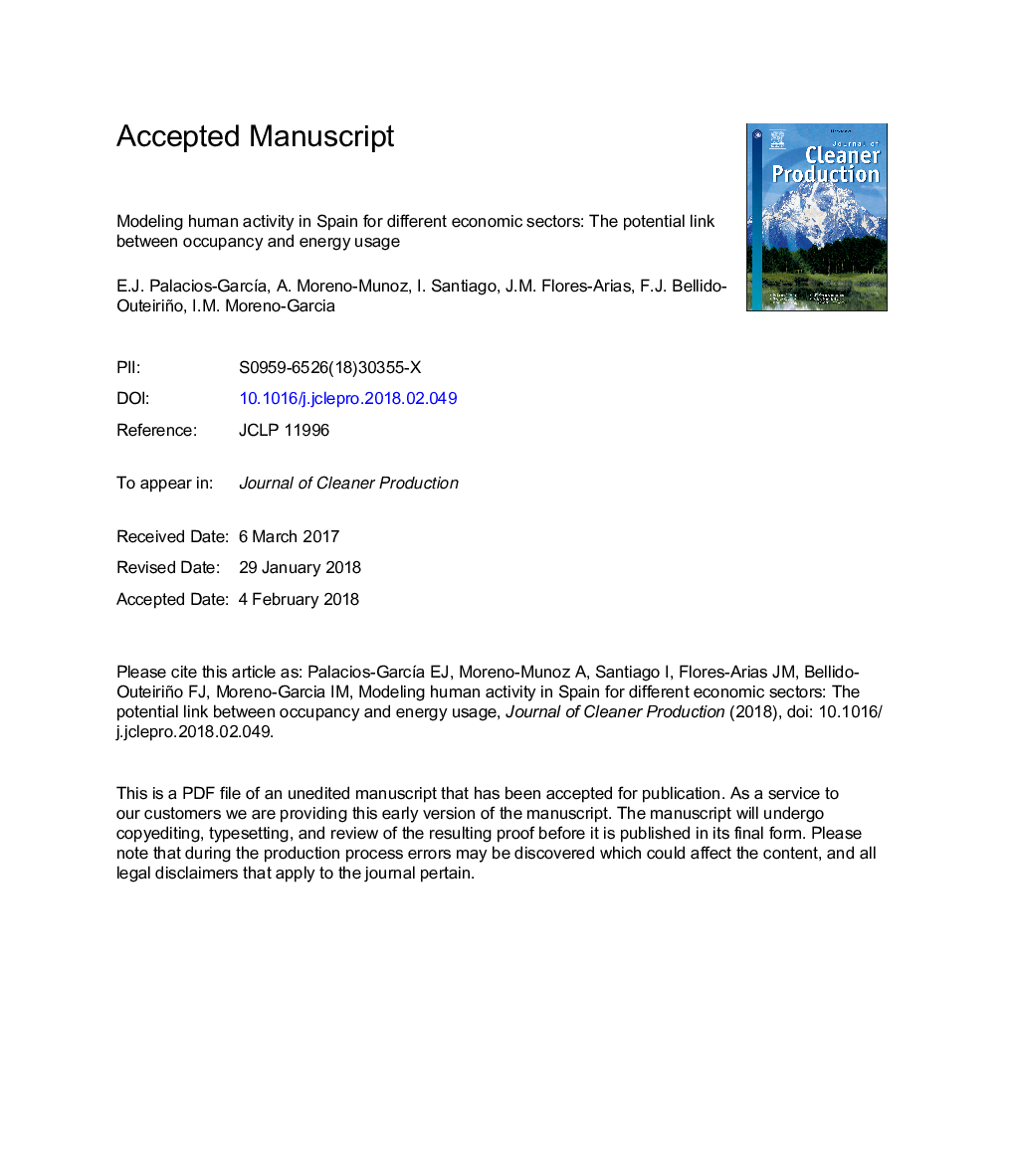| Article ID | Journal | Published Year | Pages | File Type |
|---|---|---|---|---|
| 8097234 | Journal of Cleaner Production | 2018 | 41 Pages |
Abstract
Stochastic models for predicting human behavior have become an essential part of the development of demand planning strategies, as well as a high-resolution base information for building simulation software. Due to the close relationship between human presence and consumption, occupancy patterns allow for the recognition of activity peaks, and subsequently, potential maximum demand hours. This contributes to the improvement of control strategies, which combined with the active participation of consumers will drive to major energy savings. In this paper, a novel behavior model for nine economic sectors in Spain has been developed using a Markov Chain methodology that can easily be extrapolated to other locations. The model can generate daily occupancy profiles with a 10-min resolution for the selected sectors, distinguishing between the type of day and type of working hours. The results, which have been validated and compared with other works showing good accuracy, have highlighted the characteristic patterns and maximum occupancy hours of each studied sector. Furthermore, these simulated profiles have been used as input datasets for the estimation of consumption in some selected sectors, illustrating the potential link that can be established between occupancy profiles and energy usage by means of different modeling techniques.
Related Topics
Physical Sciences and Engineering
Energy
Renewable Energy, Sustainability and the Environment
Authors
E.J. Palacios-GarcÃa, A. Moreno-Munoz, I. Santiago, J.M. Flores-Arias, F.J. Bellido-Outeiriño, I.M. Moreno-Garcia,
